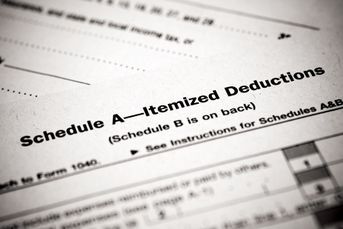Changing state residency: Tax planning headaches and opportunities
Residency rules can be very complicated, and states can be aggressive in taxing former residents.
When it comes to tax planning, the federal income tax receives the lion’s share of the attention, and rightly so. But what about state income taxes? State tax rates vary wildly around the country, with California leading the charge with a top marginal rate of 13.3%. On the other extreme, seven states have no income tax at all.
As a result of this variance, the executive you advise who is transferring to a new location or the retiree you work with who is looking for the perfect place to live should be familiar with the residency rules and how income is allocated between states.
(More: Retirement taxes are not for sissies)
CHANGING RESIDENCY
Determining residency is important, as that state will then be able to tax all income for that taxpayer, regardless of whether it’s earned working in another state or even country. Therefore, taxpayers should take as many steps as possible to establish their new residency — and, at the same time, sever their old residency. While each state has their own rules on what makes someone a resident of their state, there are many commonalities.
The main requirement is to establish a domicile. This is the place you intend to remain indefinitely, or return to whenever you’re away. For someone who rotates among various homes during the year, states will typically claim you as a resident once you spend 183 days there, although that does vary by state. Oregon uses 200 days, for example.
Beyond establishing a domicile, states will look at many other factors to determine whether you created, or severed, residency. Some of the more common factors include obtaining a driver’s license, registering to vote, getting a library card or joining a church or club. The new state isn’t likely to argue you’re not a resident, so these steps are often more necessary to prove to the former state that you no longer live there.
(More: These investments could do well under Trump tax plan)
PART-YEAR RESIDENCY
The 183-day requirement is one that often confuses people who are changing states mid-year. Meeting that minimum number of days is important when there are multiple potential residences. However, individuals don’t need to be in a state for 183 days before establishing residency. Residency is established in a new state as soon as a new domicile is set, along with the other factors identified above.
Any income earned as of the date of the move is now taxed to that new state as opposed to the former state, and a part-year resident tax return is filed in each state. This return typically includes a schedule showing total income and the portion allocated to that state. Investment advisers can provide the needed details for interest, dividends and capital gains, but taxpayers should keep careful records to allocate other income and deductions. In some cases, a simple pro ration is the only option.
NON-RESIDENT TAXES
Even though a taxpayer may have moved to a new state, it’s possible to maintain tax-ties to the old one. Rental income from the former home while it’s waiting to be sold is a common scenario. In that case, the income is taxed to the former state where the property is located, as well as the current state, which taxes your total income regardless of location. That new state will usually offer a tax credit to eliminate any double-taxation, and taxpayers typically end up paying whichever state charges more. Consultants, directors and others who often travel for work are probably familiar with the need to file in multiple states.
(More: 10 most missed tax deductions)
Residency rules can be very complicated, and states can be aggressive in taxing former residents, especially those recognizing large amounts of income right after a move. As always, it’s important to encourage your clients to keep good records to accurately document the timing of a move and income.
Tim Steffen is director of financial planning at Baird. Follow him on Twitter @TimSteffenCPA.
Learn more about reprints and licensing for this article.








